Fihonest Communication JS-BLMN5F31 Bluetooth Module User Manual Fihonest JS BLMN5F31 DATASHEET 201412223
Fihonest Communication Co.,Ltd. Bluetooth Module Fihonest JS BLMN5F31 DATASHEET 201412223
2AB2RJS-BLMN5F31_User Manual REV1
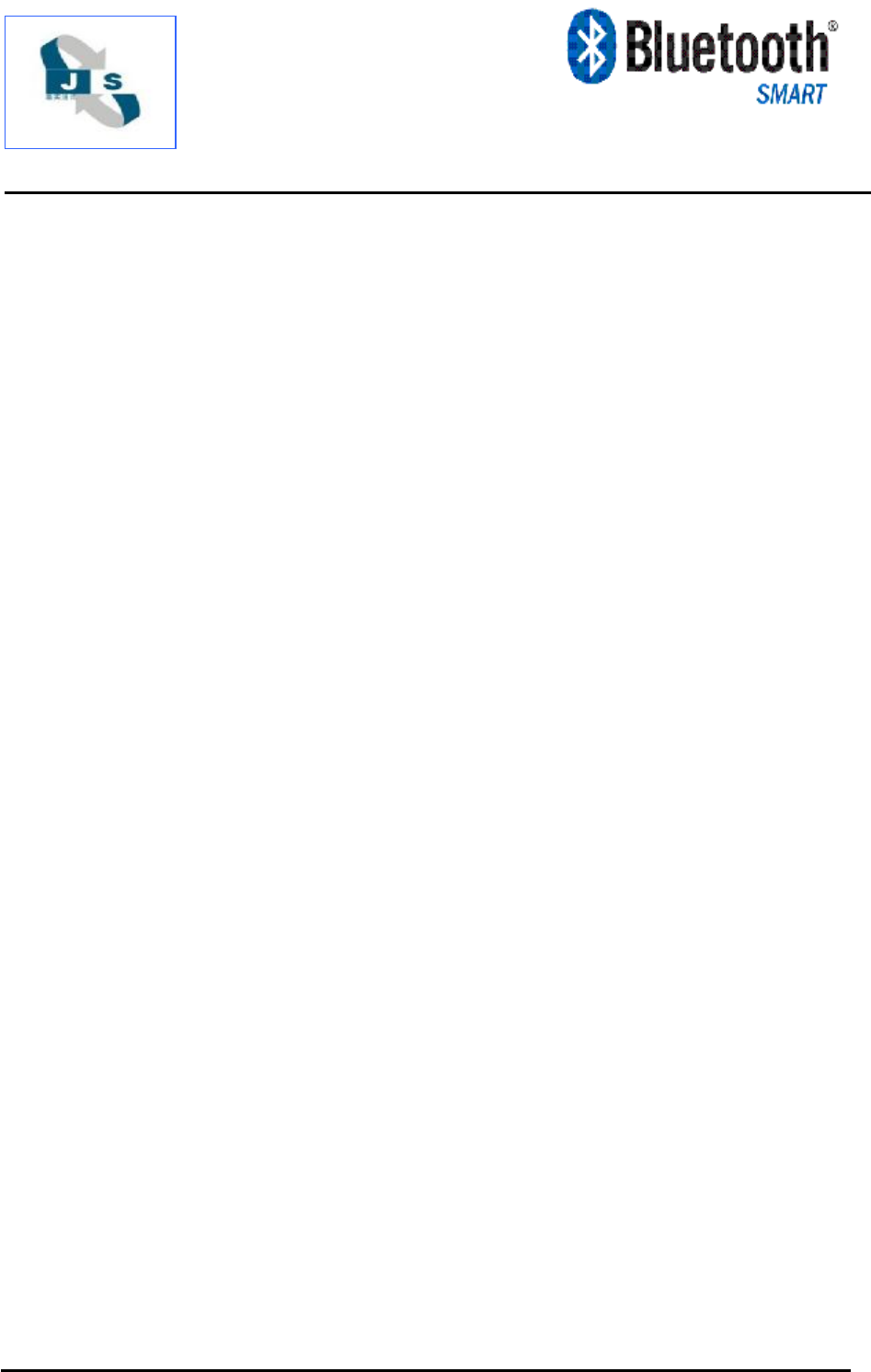
Fihonest Communication Co.,Ltd.
Fihonest Communication Co.,Ltd 1 Proprietary and Confidential
v
JS-BLMN5F31
Fihonest
Bluetooth
Module User Manual
Document
Type:
Bluetooth
Module
User Manual
Document
Version:
V1.0
Release
Date:
Dec 23
,
2014
Copyright 2012 by Fihoenst Communication Co., Ltd. All Rights Reserved.
Reproduction of this document, in part of in whole, by any means is prohibited without written permission
from Fihonest Communication Co., Ltd. The information contained herein is believed to be accurate as of
the date of publication. However, Fihonest is not liable for any damages, including indirect or
consequential from the use of software this document represents, or any reliance of the accuracy of this
document. Fihoenst reserves the right to change the contents of this document at any time without notice.
This document contains proprietary confidential trade secrets and may be subject to additional
restrictions contained in the licensing agreement under which this document was obtained.
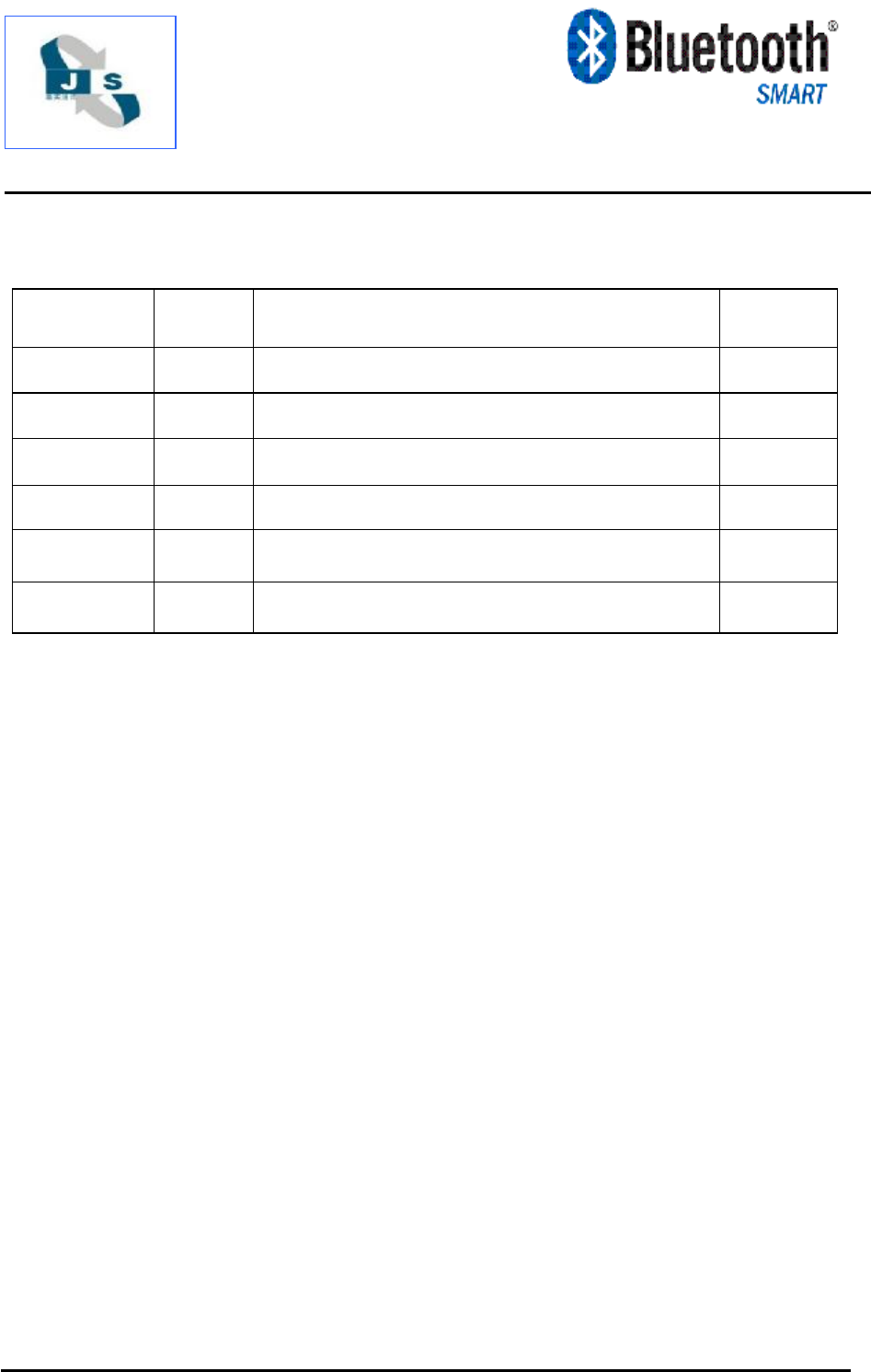
Fihonest Communication Co.,Ltd.
Fihonest Communication Co.,Ltd 2 Proprietary and Confidential
v
Revision
History
Date Version Description Author
2014-12-23 V1.0 n First Release
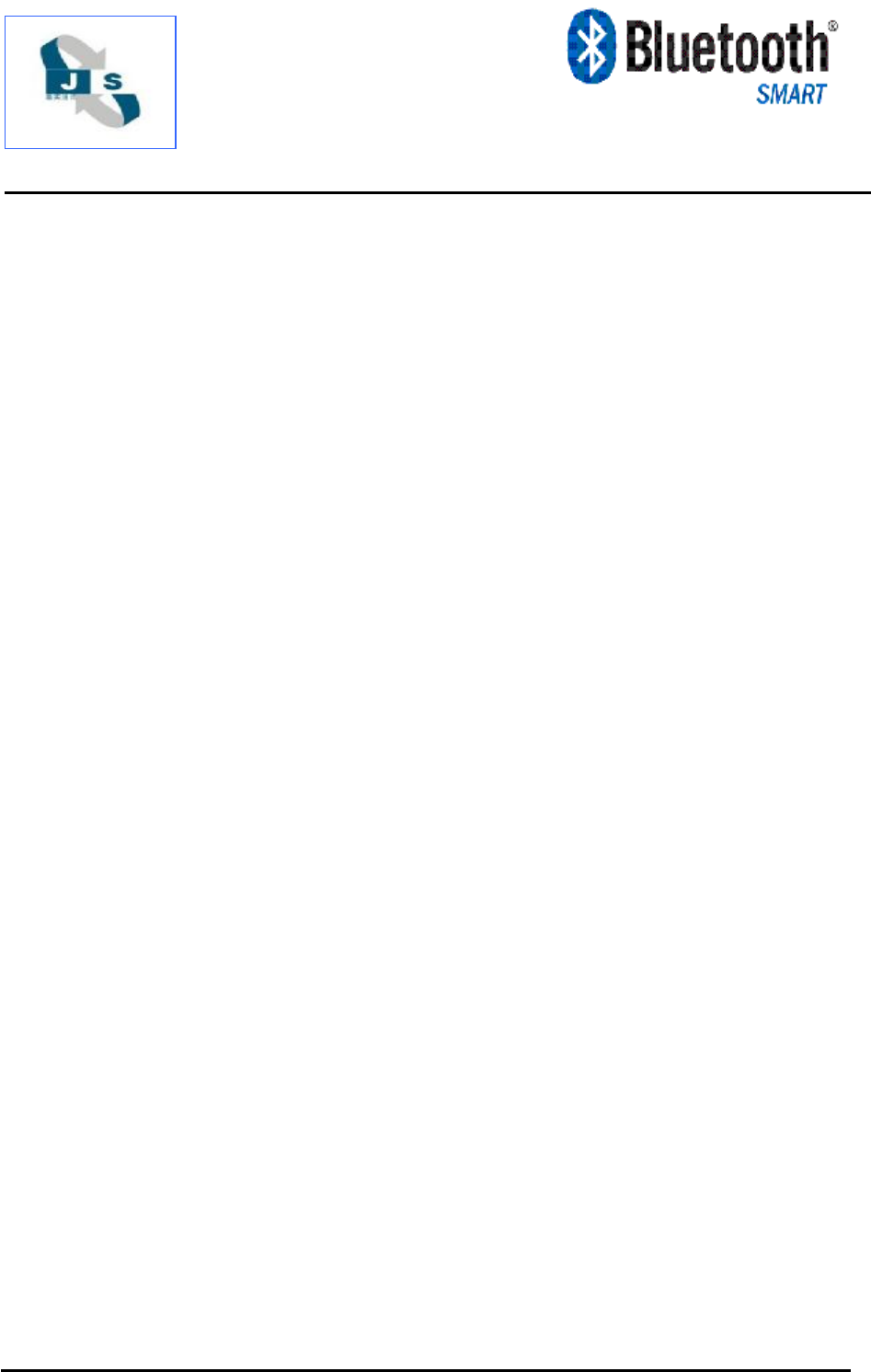
Fihonest Communication Co.,Ltd.
Fihonest Communication Co.,Ltd 3 Proprietary and Confidential
v
CONTENT
1. INTRODUCTION................................................................................................................................. 4
1.1 B
lock
D
iagram
........................................................................................................................................ 4
1.2 F
eatures
................................................................................................................................................. 5
1.3 A
pplications
........................................................................................................................................... 6
2. GENERAL SPECIFICATION ............................................................................................................ 7
3. PHYSICAL CHARACTERISTIC...................................................................................................... ..8
3.1 Pin Description.................................................................................................................................... 10
4. PHYSICAL INTERFACE……………………………………………………………………….…..11
4.1 P
ower Supply
.......................................................................................................................................... .11
4.2 General Purpose I/0............................................................................................................................ 11
4.3 UART.................................................................................................................................................. 11
4.4 I2C....................................................................................................................................................... 11
4.5 Debugger Support............................................................................................................................... ..11
5. ELECTRICAL CHARACTERISTIC ................................................................................................12
5.1 A
bsolute
M
aximus
R
atings
.......................................................................................................................12
5.2 R
ecommended
O
perating
C
onditions
...........................................................................................................12
5.3 RF Performance……………………………………………………………………………………...12
5.3 P
ower
Consumptions
.................................................................................................................................12
6. PACKAGING INFORMATION ........................................................................................................ 13
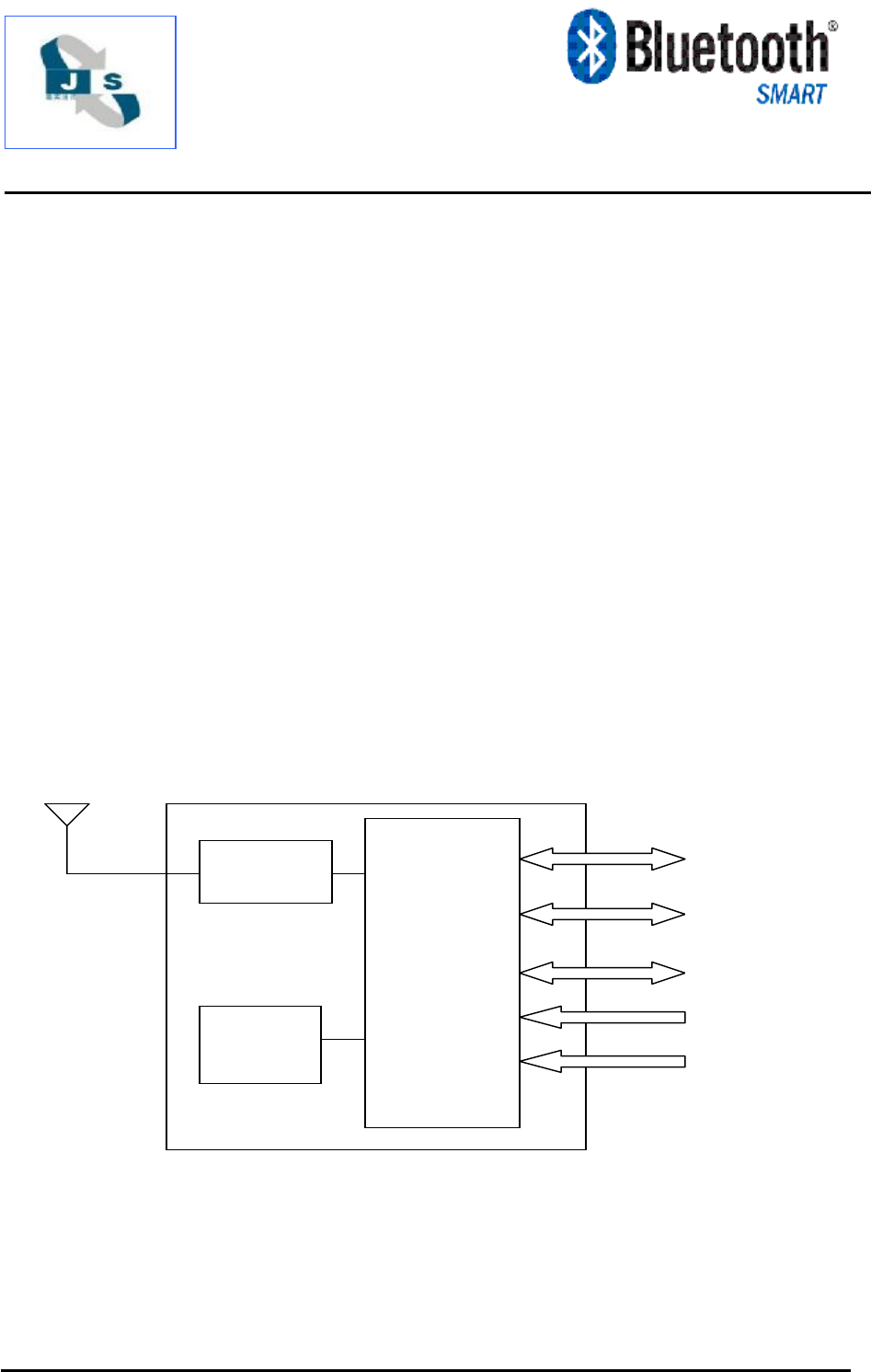
Fihonest Communication Co.,Ltd.
Fihonest Communication Co.,Ltd 4 Proprietary and Confidential
v
1. INTRODUCTION
The JS-BLMN5F31 Bluetooth® module is a perfect solution for bluetooth low energy single mode
application. It can be configured,command and contorlled via simple ASCII string with customer
application embeded onto the unit. It is slim and light so the designers can have better flexibilities for
the bluetooth low energy product shapes.
The JS-BLMN5F31 Bluetooth® module complies with Bluetooth® specification version 4.0(single
mode). It includes integrated software stack,profiles,and AT modem like commands.It supports
maximum bluetooth data rates via UART interface and provides PIO,I2C,SPI interface for external
hardware requirement.
The detail information of JS-BLMN5F31 Bluetooth® module is presented in this document below.
1.1 Block Diagram
UART
nRF51822
RF mat
ch
Crystal
16MHz
PIO
SWD
VDD
I2C
PCB Antenna
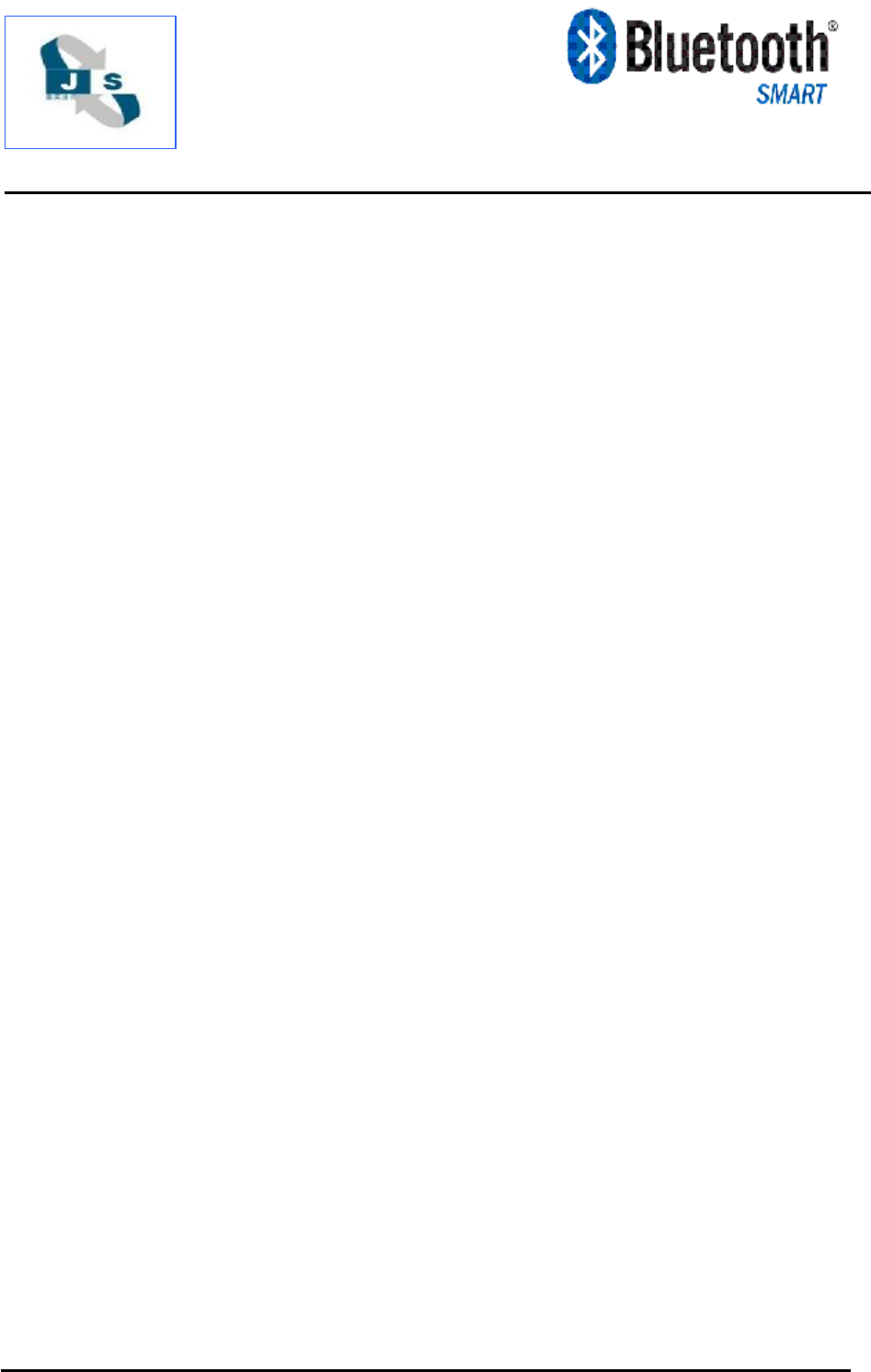
Fihonest Communication Co.,Ltd.
Fihonest Communication Co.,Ltd 5 Proprietary and Confidential
v
1.2 Features
ü Small overall dimension
ü Bluetooth specification V4.0(single mode)
ü Class 2 support
ü -93dBm sensitivity in Bluetooth low energy mode.
ü TX Power -20dBm to +4dBm
ü ARM Cortex-M0 32 bit processor,256KB Flash memory,16KB RAM
n Serial Wire Debug (SWD)
ü Complete power-optimized stack,includeing contoller and host
ü Embedded bluetooth stack protocols and profiles include: GAP, GATT, SMP, ATT, L2CAP
ü
Low
power
consumption
(13mA
RX,
10.5mA
TX,
@ 0dBm)
ü Ultra low current consumption,flexible power management
n 0.4uA @ 3V off mode
n 0.5uA @ 3V in off mode + 1 region RAM retention
n 2.3uA @ 3V on mode,all blocks IDLE
ü
Secure
and
robust
communication
link
with
billions
of
unique
codes
n
FHSS
(Frequency
Hopping
Spread
Spectrum)
n
24
bit
CRC
Error
correction
for
guaranteed
packet
delivery
n Lead Free design which is compliant with RoHS requirements
ü Flexible real-time counter and two 16 bit and one 24 bit times with counter mode
ü AES Coprocessor,random number generator,watchdog timer
ü Configurable I/O mapping (I/0 signals can use any pin,simple layout of external application)
ü Physical connection as SMD type
※ Some features are optional for customization on demand.
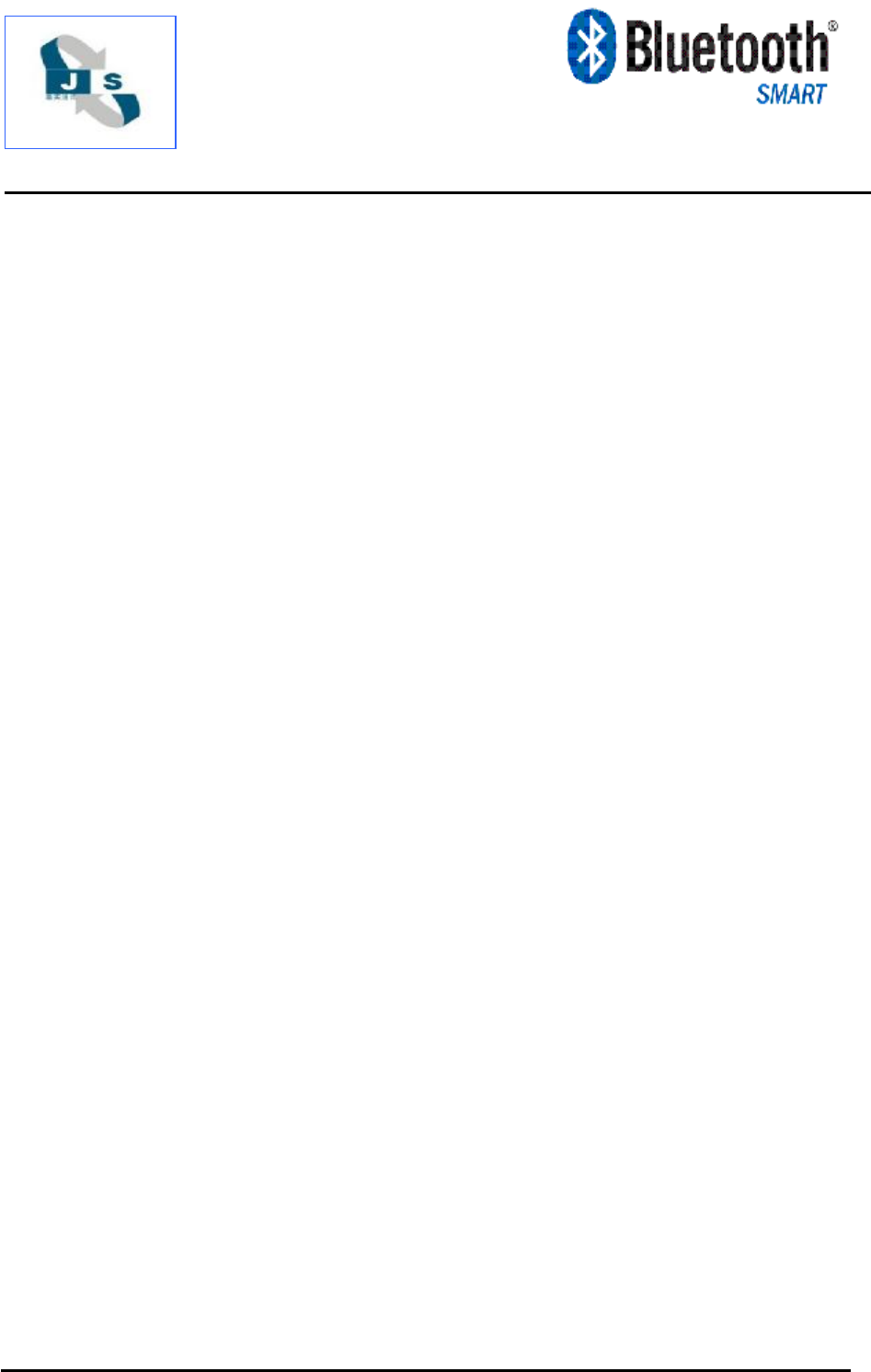
Fihonest Communication Co.,Ltd.
Fihonest Communication Co.,Ltd 6 Proprietary and Confidential
v
1.3 Application
ü 2.4-GHz Bluetooth low energy Systems
ü Human-interface devices (Keyboard, Mouse,Portable Devices, Remote Control)
ü Sports and fitness devices (Heart rate monitor,Foot pod,Cycle speed/power/cadence )
ü Mobile Phone Accessories
ü Remote controller via BLE connection
ü Health devices (Glucose meter)
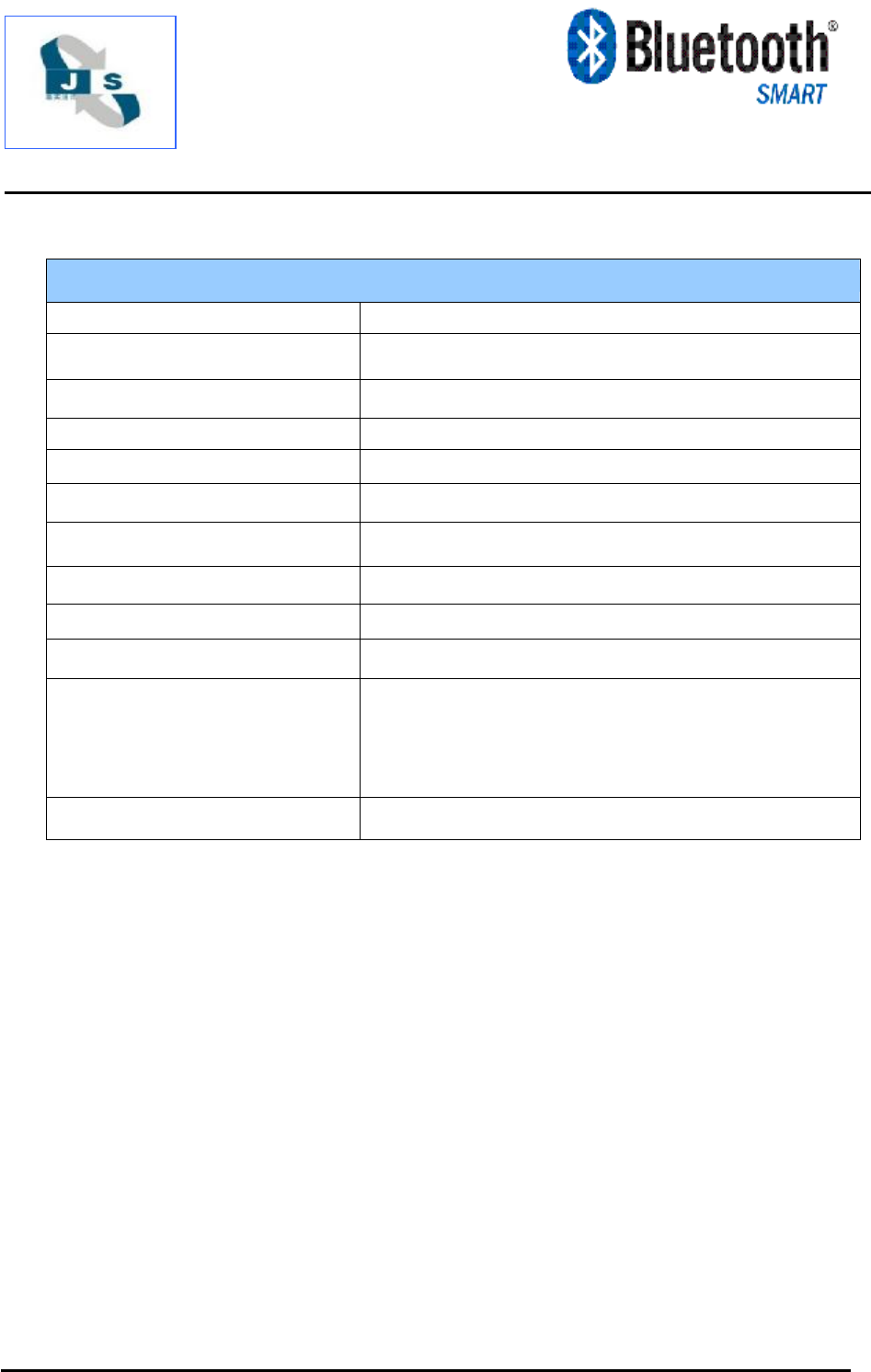
Fihonest Communication Co.,Ltd.
Fihonest Communication Co.,Ltd 7 Proprietary and Confidential
v
2. GENERAL SPECIFICATION
General Specification
Chip
Set Nordic nRF51822
Module ID
JS-BLMN5F31
BT
Standard Bluetooth
®
V4.0
specification(single mode)
Frequency
Band
2.402GHz~2.480GHz
ISM
Band
Modulation GFSK,
250
KHz
deviation
Number of channels 40 channels for Bluetooth Low Energy
Output Power(Class II) 0±1dBm(L ch), -1±1dBm(M ch),-1±1dBm(H ch)
Receive
sensitivity -90dBm @ 0.1% BER
Baseband Crystal OSC
32MHz,32.768KHz(optional)
RF Input Impedance
50 ohms
Host Interface
l UART
l I2C
l PIO
l SWD
Temperature -20ºC to +70ºC
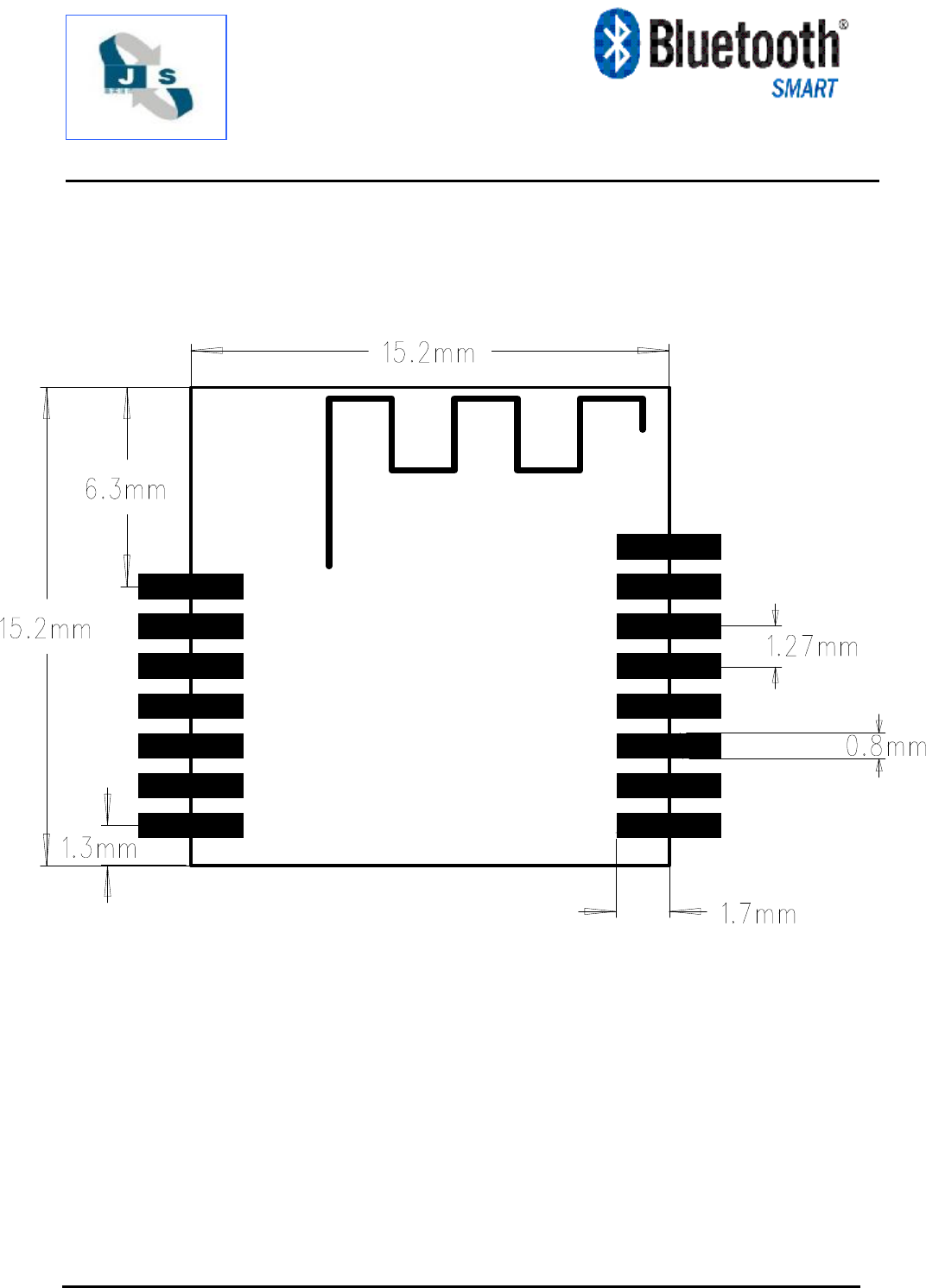
Fihonest Communication Co.,Ltd.
Fihonest Communication Co.,Ltd 8 Proprietary and Confidential
v
3. PHYSICAL CHARACTERISTIC
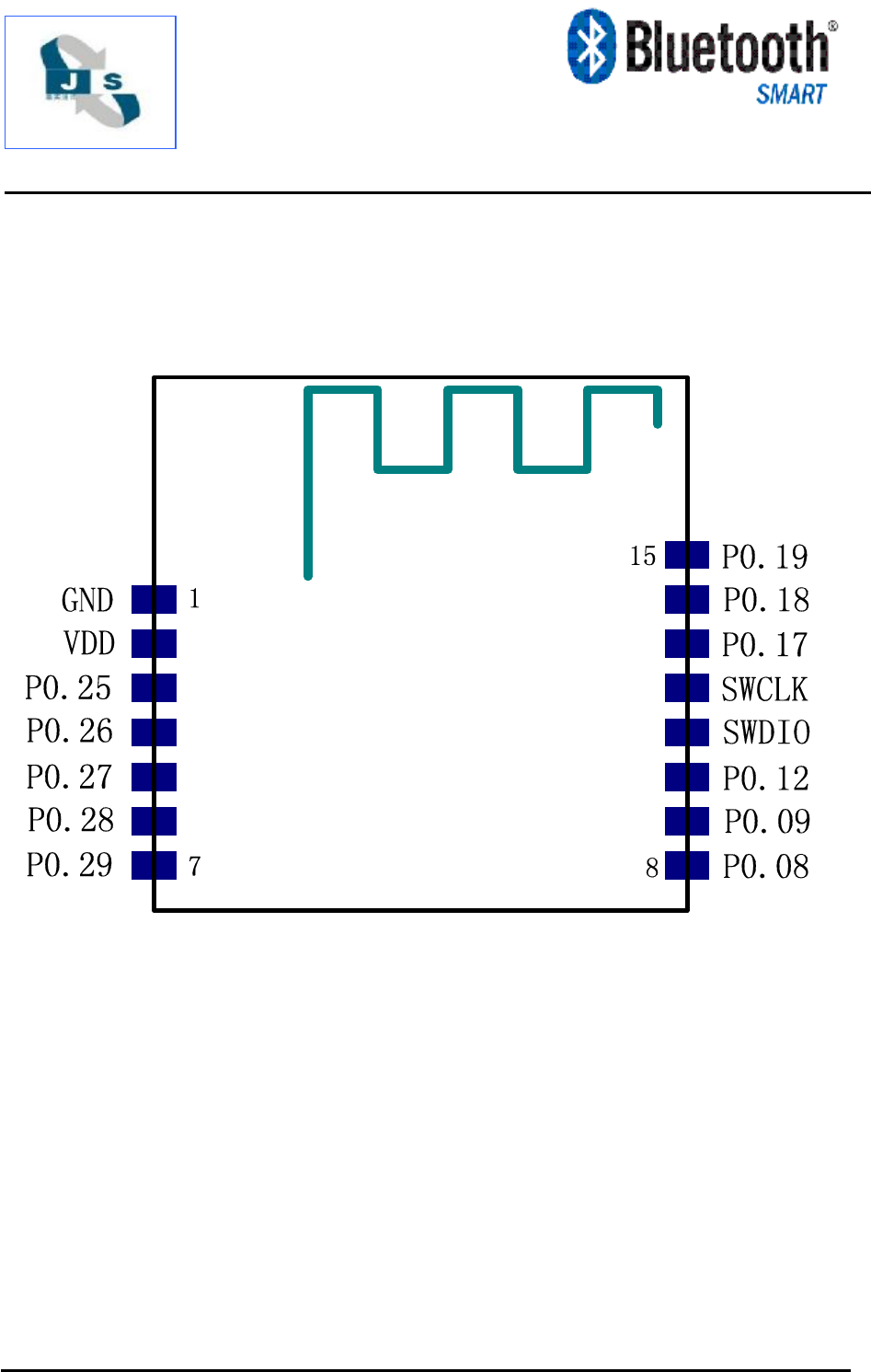
Fihonest Communication Co.,Ltd.
Fihonest Communication Co.,Ltd 9 Proprietary and Confidential
v
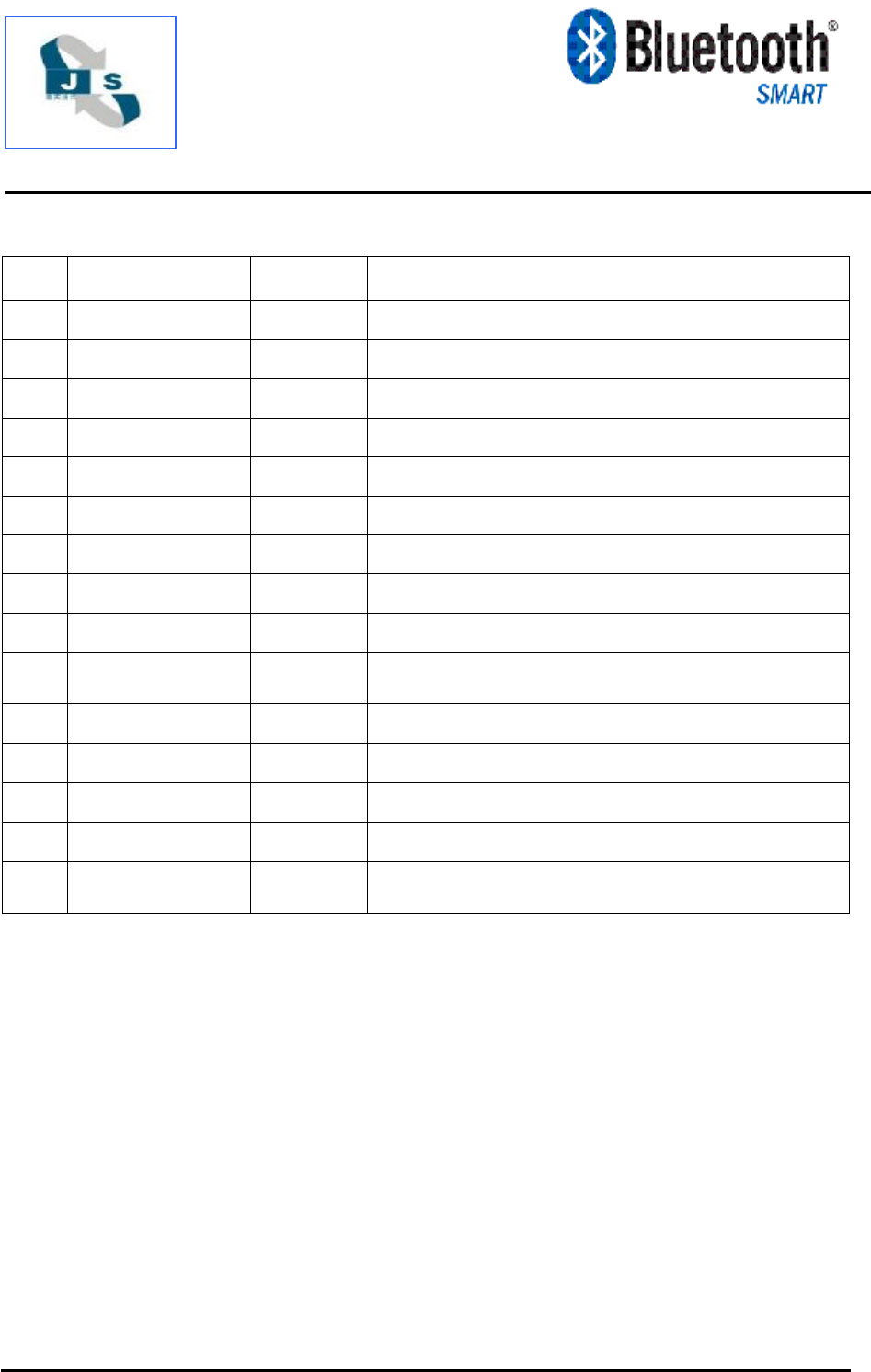
Fihonest Communication Co.,Ltd.
Fihonest Communication Co.,Ltd 10 Proprietary and Confidential
v
3.1 Pin Description
Pin# Pin Name Pin Type Description
1 GND Ground Ground
2 VDD Power Power Supply
3 P0.25 Digital I/O General purpose I/O
4 P0.26 Digital I/O General purpose I/O
5 P0.27 Digital I/O General purpose I/O
6 P0.28 Digital I/O General purpose I/O
7 P0.29 Digital I/O General purpose I/O
8 P0.08 Digital I/O General purpose I/O
9 P0.09 Digital I/O General purpose I/O
10 P0.12 Digital I/O General purpose I/O
11 SWDIO Digital I/O Debug and flash programming I/O
12 SWCLK Digital input Debug and flash programming I/O
13 P0.17 Digital I/O General purpose I/O
14 P0.18 Digital I/O General purpose I/O
15 P0.19 Digital I/O General purpose I/O
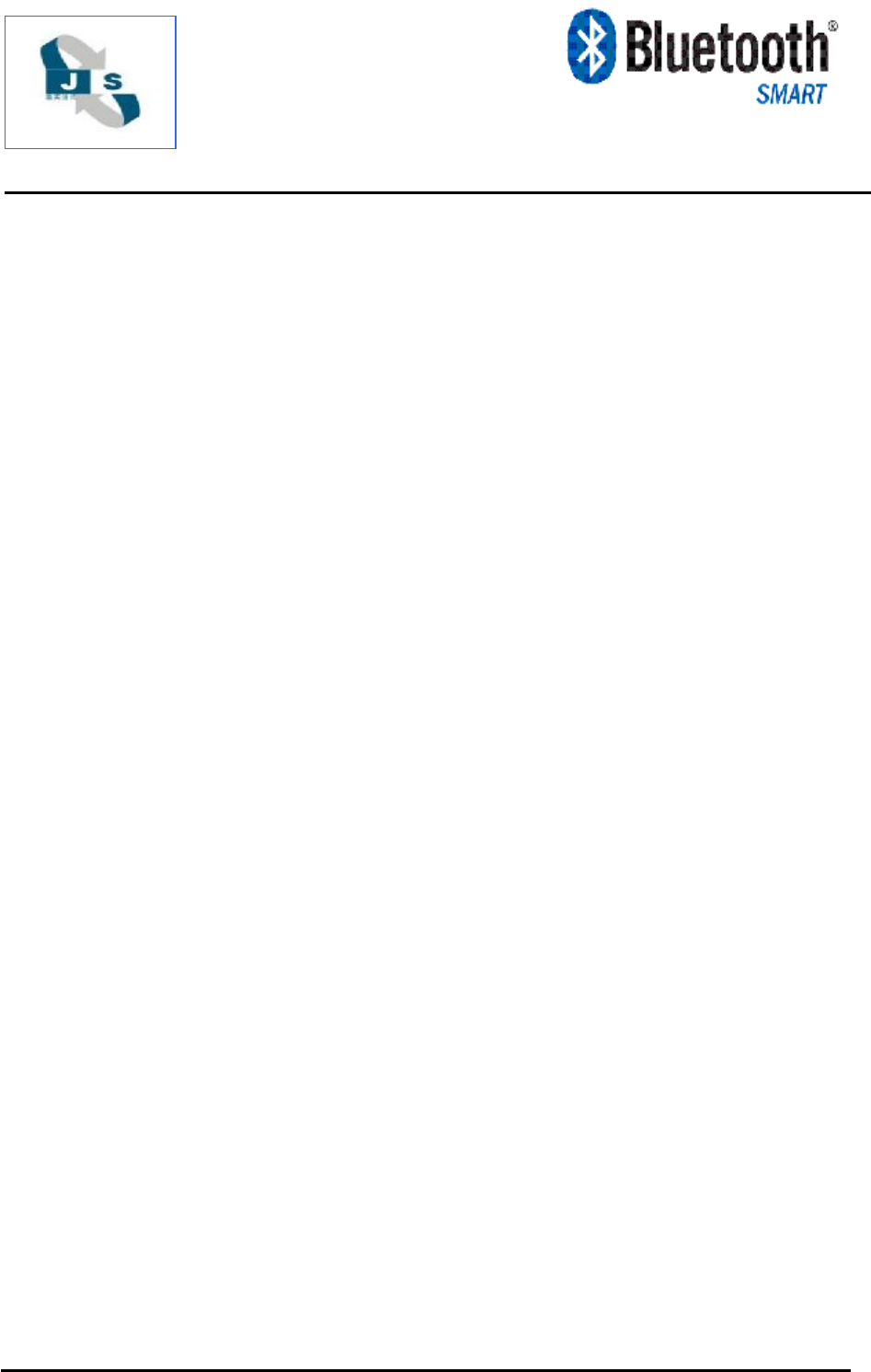
Fihonest Communication Co.,Ltd.
Fihonest Communication Co.,Ltd 11 Proprietary and Confidential
v
4. PHYSICAL INTERFACE
4.1
Power
Supply
The transient response of the regulator is important. If the power rails of the module are
supplied from an external voltage source, the transient response of any regulator.
4.2
General
Purpose
IO
There are nine general purpose digital IOs defined in the module. It can configure whether
peripheral modules control certain pins or whether they are under software control, and if so,
whether each pin is configured
as an input or output and if a pullup or pulldown resistor in the pad is connected. Each
peripheral that connectsto the I/O pins can choose between two different I/O pin locations to
ensure flexibility in various applications.
4.3 UART
This is a standard UART interface for communicating with other serial devices. The UART
interface provides a simple mechanism for communicating with other serial devices using the
RS232 protocol.
When the module is connected to another digital device,UART_RX and UART_TX transfer
data between the two devices.
4.4 I2C
Any three PIOs can be used as a master I2C interface by configuring the hardware bit serialiser
with suitable firmware. The strong pull-ups in the PIO pads eliminate the need for external pull-
up resistors.
4.5 Debugger Support
The two pin Serial Wire Debug (SWD) interface provided as a part of the Debug Access Port
(DAP) offers a flexible and powerful mechanism for non-intrusive debugging of program code.
Breakpoints and single stepping are part of this support.
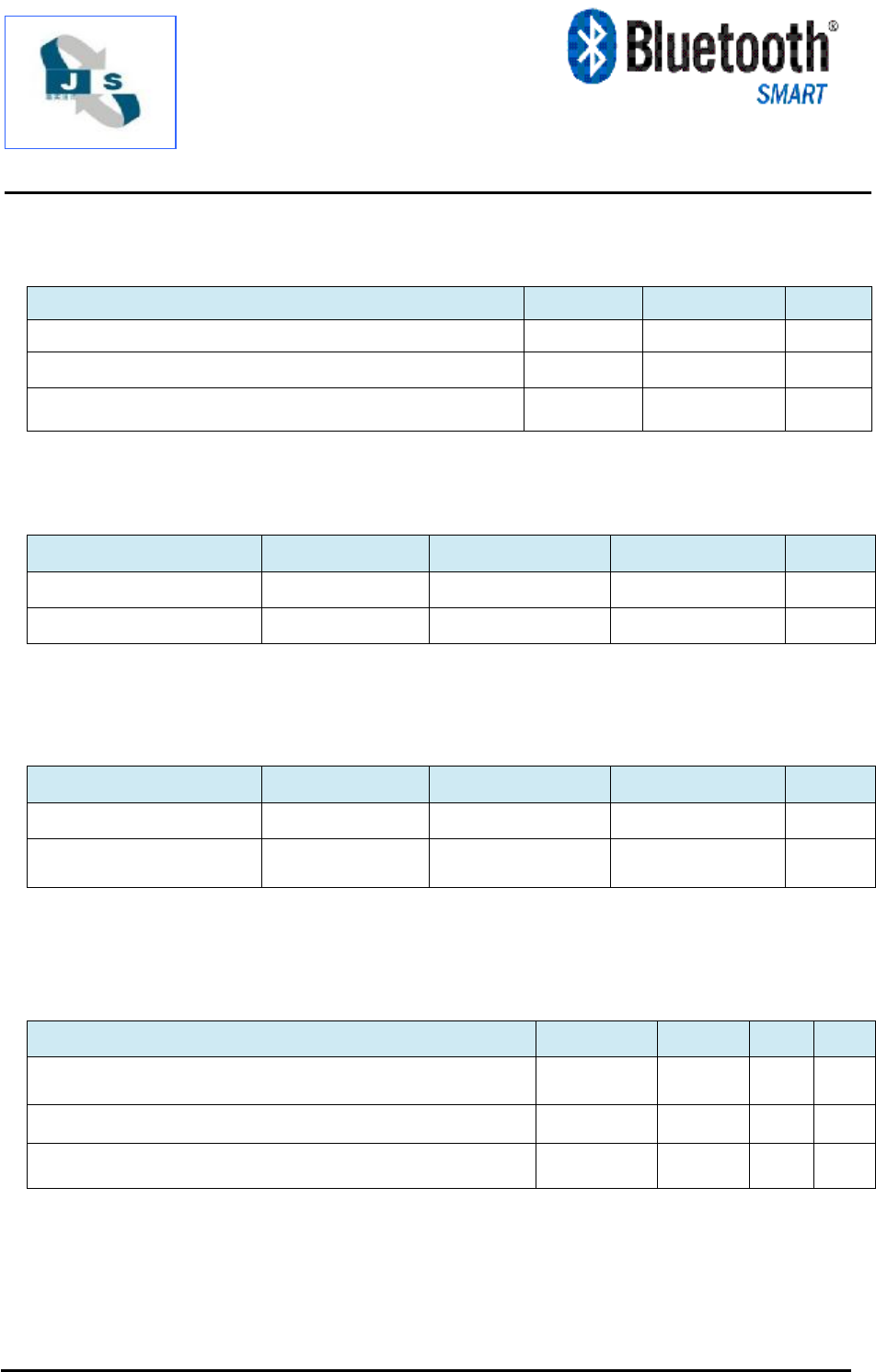
Fihonest Communication Co.,Ltd.
Fihonest Communication Co.,Ltd 12 Proprietary and Confidential
v
5. ELECTRICAL CHARACTERISTIC
5.1
Absolute
Maximum
Ratings
Description Min Max Unit
Supply voltage -0.3 3.9 V
Voltage on any digital pin -0.5 VDD+0.3<=3.9 V
Storage temperature range -40 125 ºC
5.2
Recommended
Operating
Conditions
Description Min. Typ. Max. Unit
VDD pin operating supply 2.0 3.3 3.6 V
Operating temperature -20 25 70 ºC
5.3
RF Performance
Description Min. Typ. Max. Unit
Maximum output power -20 0 4 dBm
Sensitivity(0.1%BER)
@1Mbps
-90 dBm
5.4
Power
consumptions
Test conditions:
TA
= 25°C, VDD = 3.3 V and fc
= 2440 MHz,
1 Mbsp, GFSK, 250-kHz deviation, Bluetooth™ low energy Mode, 1% BER
(1)
Description Min Type Max Unit
TX mode,0dBm 10.5 mA
RX mode,0dBm 13 mA
System-on base current 2.3 uA
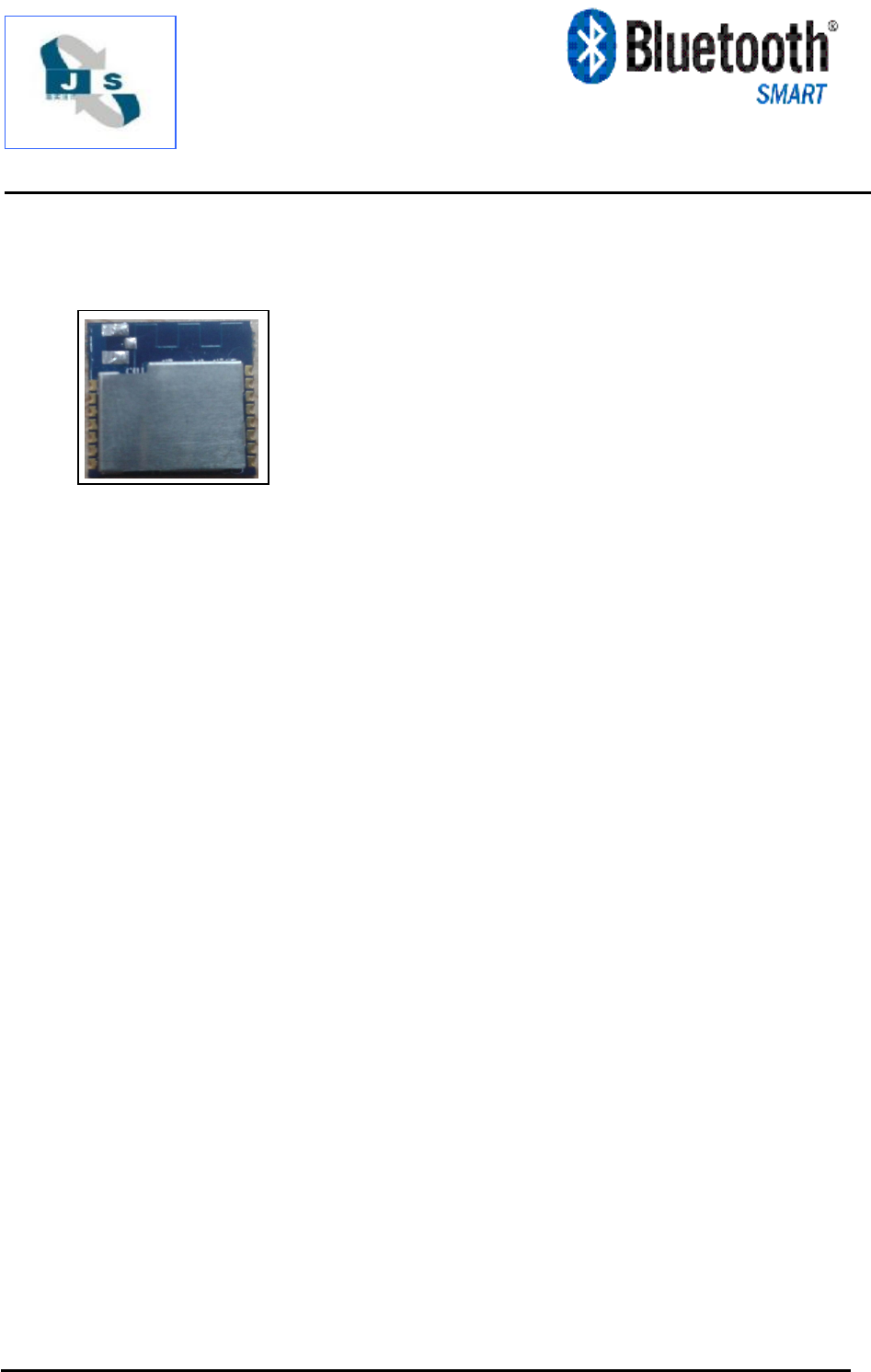
Fihonest Communication Co.,Ltd.
Fihonest Communication Co.,Ltd 13 Proprietary and Confidential
v
6. PACKAGING INFORMATION
1. BLUETOOTH® Module: JS-BLMN5F31
Note: Warning
This device and its antenna must not be located or operating in conjunction with any other antenna and transmitter.
This device complies with part 15 of the FCC rules. Operation is subject to the following two conditions: (1) this device may not
cause harmful interference, and (2) this device must accept any interference received, including interference that may cause
undesired operation.
Changes or modifications not expressly approved by the party responsible for compliance could void the user’s authority to
operate the equipment.
NOTE: This equipment has been tested and found to comply with the limits for a Class B digital device, pursuant to part 15 of the
FCC Rules. These limits are designed to provide reasonable protection against harmful interference in a residential installation.
This equipment generates uses and can radiate radio frequency energy and, if not installed and used in accordance with the
instructions, may cause harmful interference to radio communications. However, there is no guarantee that interference will not
occur in a particular installation. If this equipment does cause harmful interference to radio or television reception, which can be
determined by turning the equipment off and on, the user is encouraged to try to correct the interference by one or more of the
following measures:
- Reorient or relocate the receiving antenna.
- Increase the separation between the equipment and receiver.
-Connect the equipment into an outlet on a circuit different from that to which the receiver is connected.
-Consult the dealer or an experienced radio/TV technician for help
Important announcement
LABEL OF THE END PRODUCT:
The final end product must be labeled in a visible area with the following" Contains TX FCC ID: 2AB2RJS-BLMN5F31
". The FCC part 15.19 statement below has to also be available on the label: This device complies with Part 15 of FCC rules.
Operation is subject to the following two conditions: (1) this device may not cause harmful interference and (2) this device must
accept any interference received, including interference that may cause undesired operation.
To comply with FCC regulations limiting both maximum RF output power and human exposure to RF radiation, the maximum
antenna gain including cable loss in a portable exposure condition must not exceed -1dBi.
A user manual with the end product must clearly indicate the operating requirements and conditions that must be observed to
ensure compliance with current FCC RF exposure guidelines.
The end product with an embedded Module may also need to pass the FCC Part 15 unintentional emission testing requirements
and be properly authorized per FCC Part 15.
Do not simultaneously emit.